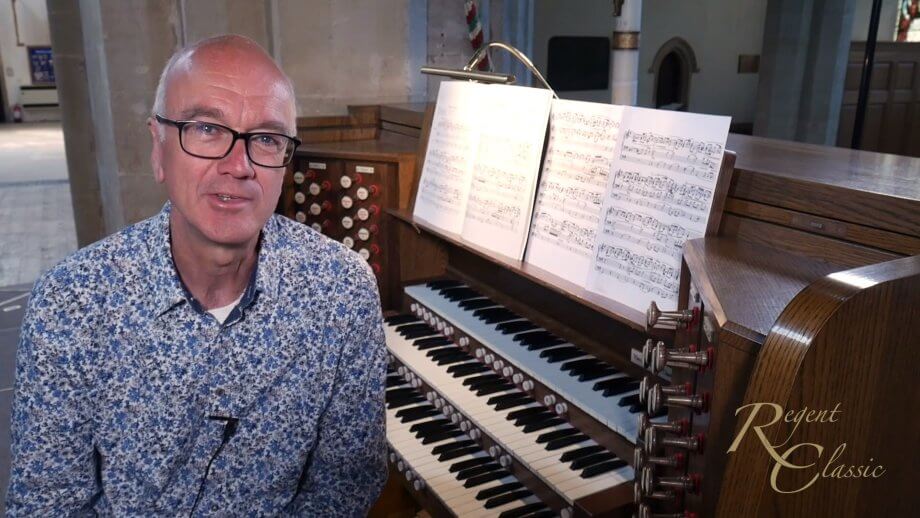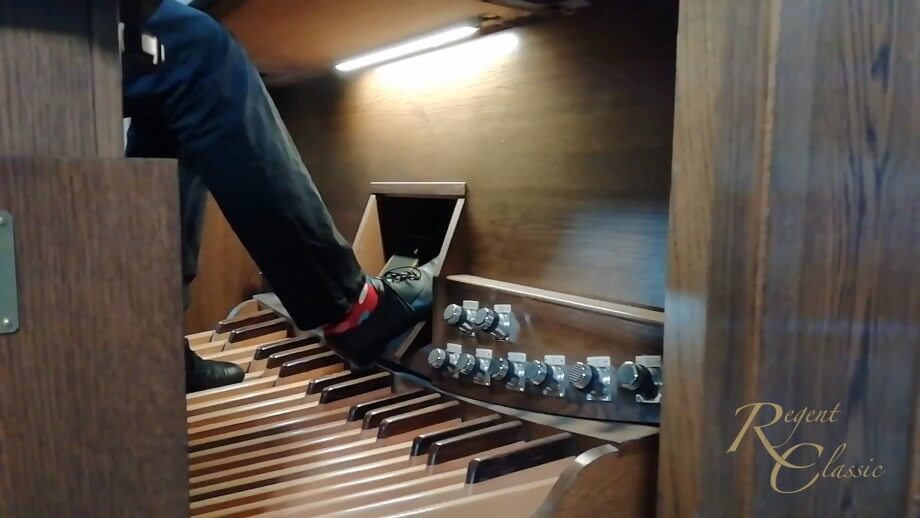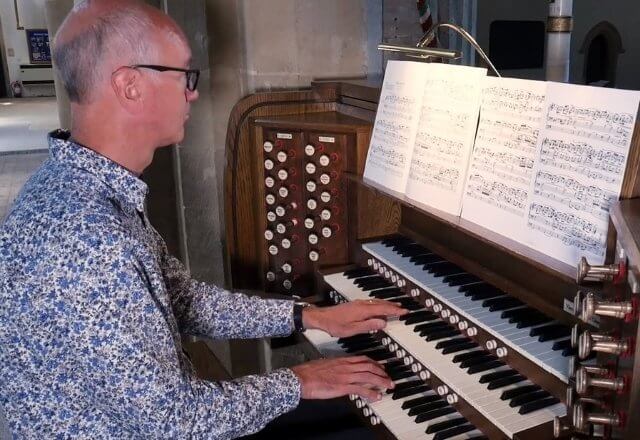In 2015 Regent Classic rebuilt the organ at St Mary’s, Witney, a tale that you can read about in a separate story. The bespoke organ now has three manuals and an enlarged specification, with a separate choir division in the chancel.
Francis Rumsey, the organist at St Mary’s, and a consultant to Regent Classic, shares some of the recordings he’s made there in the recent past. These demonstrate the versatility and tone quality of the organ, as well as offering some interesting repertoire.
Percy Whitlock an English Organist and Composer
Percy Whitlock was organist at Bournemouth Pavilion in the 1930s, where he used to entertain the tourists at weekends, and he also served at St Stephen’s, Bournemouth, in the early 30s. Like a surprisingly large number of organists, he was an avid railway enthusiast, also being keen on clocks and other mechanical devices.
Whitlock’s music has an English charm and modesty, and although his works rather faded into obscurity for a while after his early death, they have become more popular in recent years. The Percy Whitlock Trust tries to keep his memory and music alive.
The German hymn Chorale Prelude on ‘Werde Munter’
Whitlock’s chorale prelude on the German hymn “Werde Munter” is from Book 2 of a set of Six Hymn Preludes, written towards the end of his short life, in 1944.
The tune, which many will know as “Jesu Joy of Man’s Desiring”, is probably one of the most popular and widely arranged pieces in the entire musical repertoire, originally written by Johann Schop. It’s a tune that’s been recycled and used in various ways by different hymn writers and composers over the years, and even the words we know today are probably based on a Victorian adaptation by Robert Bridges.

In this prelude Whitlock uses some of the string stops of the organ, coupled to a gentle four-foot flute, as a mild accompaniment to the slightly embellished chorale melody.
String-toned registrations will tend to use narrowly scaled flues on a pipe organ, which gives them an edgy tone with lots of higher harmonics. They tend to blend quite well with other stops, and a big chorus of them, although not very commonly found these days, can be a fantastically romantic or theatrical sound.
When a pair of them is sounded together, one slightly out of tune with the other, they create what is known as a celeste. Alternatively known as a vox angelica, the sound is ethereal (or perhaps ‘heavenly’) and slightly undulating, as a result of the acoustic beats that arise between the nearly unison notes.
Whitlock uses the effect a lot in his quieter pieces, but the sound produced will depend very much on the organ in question and the exact combination of strings and celestes employed. Just over half way through, he indicates the addition of a swell diapason to the accompaniment in order to give it a bit more body, the swell diapason often being slightly string toned in any case.

The chorale melody is indicated to be played on a ‘Horn’ stop (alternatively Violoncello), which is something Whitlock indicated from time to time, although not common on too many current instruments.
It’s quite possible that this could be rendered on a ‘horn diapason’ (not uncommon on theatre organs) rather than a reed stop, in other words a slightly stringy diapason voiced to have a nasal, horn-like quality, made using slotted pipes. (The Violoncello stop, too, would be something of a stringy diapason – or a diapasony string.)
Alternatively it could be done on a diaphonic horn or a mellow-toned reed. In this performance Francis Rumsey uses the great diapasons as about the closest thing available on the Witney instrument.
The piece involves quite a number of gentle slowings down at the ends of phrases, followed by a pick up again for the next. You’ll also notice quite a lot of swell pedal manipulation for the accompanimental dynamics, which involves some ‘boxing and coxing’ with the pedal part.
More Videos with Francis Rumsey
- Percy Whitlock: Chorale Prelude on ‘Werde Munter’
- Mendelssohn (arr. W.T. Best): Overture to ‘St. Paul’
- Elgar (arr. Martin): Imperial March, Op. 32
- J.S. Bach: Sonata No. 5, Largo (BWV 529)
- Alfred Hollins: A Trumpet Minuet
I’m a retired academic, with a background in music and audio engineering. I’m currently a consultant for Viscount & Regent Classic Organs, as well as being a freelance organist, including a role as organist/choirmaster at St Mary’s, Witney. I sing bass with Oxford Pro Musica Singers and the Cathedral Singers of Christ Church, Oxford.


